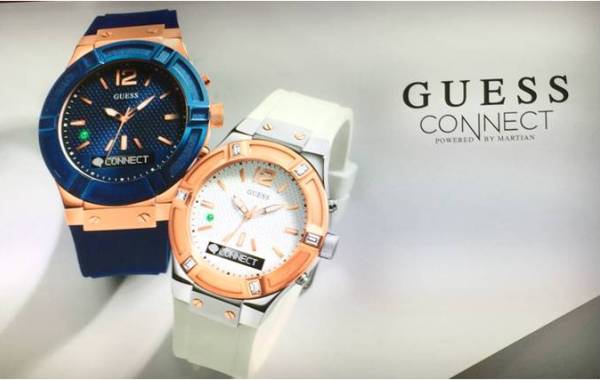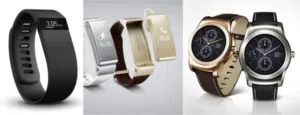Wearables were mainly represented by smartwatches at MWC 2015. Most top OEMs have smartwatches in their portfolio or have first models announced with many new announcements coming out at the MWC 2015 in Barcelona.
The observer is seeing two main approaches to this market. There is the smart version of the digital watch as marketed by Casio since 1974 and than there is the typical wristwatch (round or rectangular) that shows the user a typical watch face on its high resolution display.
MWC 2015 provided plenty of opportunities for both types to show their respective face to the world. Differentiators include price, size, operating system, as well as functionality. Most smartwatches today are Android-based and operate in conjunction with the smartphone of the user. Some models do also offer their own cellular radio to allow for complete standalone functionality. This is, however, still the exception.
One particular product concept is the high end fitness band. Most fitness bands are pure sensing devices that have minimal displays or none at all. As the price point increases, more functionality is added leading to larger and higher resolution display use. Fitbit as a leader in the fitness band market demonstrates this very well.
While the consumer electronics companies follow the idea of incorporating high resolution displays that are as large as possible to replace the watch face and allow the creation of a smart watch type user interface, the traditional watch companies extend their offering into more networking functions related to other mobile devices.
Smartwatches: Fitbit Charge, Huawei TalkBand B2, LG Watch Urbane
So what makes a smart watch a smartwatch?
When we follow the likes of Dick Tracy, the key is communication in the form of two way radio or even video calling. Other vendors are going the route of putting the highest number of functions into their devices in the hope that the consumer finds something that appeals to him. Then there are the specialized devices that focus on certain niche applications such as racing, climbing, diving, etc. While they may not attract a large market, they may be essential products in their market achieving high market penetration in their niche markets. We also see more established watch brands entering the market with what one could call hybrid watches. While maintaining their traditional style of a mechanical wristwatch they add very small display segments to provide additional information including messages and such.
 Martian Guess Connect
Martian Guess Connect
Many devices are already capable of these tasks, however so far consumer interest has not been overwhelming. Several million units have been sold, but after strong sales following their respective releases, sales have been slow. This is not the sign of the kind of consumer enthusiasm that these companies are hoping for.
The question for the OEMs remains “What type and function will resonate with the consumer?”.
The recent Apple event announcing more details of the Apple Watch shows three main aspects Apple is pushing. There is communication, health and design. Arguably, communication and health have been addressed by other manufacturers since the beginning, though there is still a difference between the different devices mostly based on the user interface and input method.While Apple claims superiority based on the user interface, as the strong suite of the company’s identity, the question remains if this will be enough to sway the way consumers look at smartwatches. A survey by NBC in the US, on the day after the Apple event, showed that about half of the responses were actually positive; this is higher than other surveys I have seen. Also about half of the responses claimed interest in the Apple Watch. Nevertheless this is a steep hill to climb, but Apple may be the best company in the world right now to lead the way.
The third aspect Apple is pushing in its watch is the design aspect. Some of the later watches seem to finally acknowledge that wristwatches are as much about fashion as they are about timekeeping. In addition, for now, Apple is also holding the record for the most expensive consumer smart watch with a price tag of $10k for the 18 karat pure gold version, while the cheapest one starts at $349 for the small sport edition.
Apple is also expanding the Apple Pay function to the Apple Watch, making it basically a credit card on the wrist. So far Apple Pay is still considered a safe payment method, however one should not underestimate the resourcefulness of the hacker community. In most cases the question is not if a system is being hacked, but when.
While I personally do not wear a watch every day, neither approach would make me change my position. While the traditional watch approach does not offer much in terms of functionality, the big screen approach seems extremely nerdy. Remember those Casio watches with calculators that required a microscope to see the keyboard and extremely good hand eye coordination to hit the right keys?
The industry hopes for Apple to change all this, but I am not as optimistic for the upcoming release as many others. I see strong initial sales, but in the long run the question is how people keep using the device after the initial excitement is gone. Fitness bands show a strong drop off after a few months, a fate that smartwatches may share as well, unless you invested $10k for the gold version. – Norbert Hildebrand


